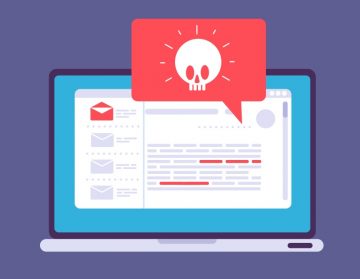Requirements For Your Inbox Delivery Email Scam

The email titled "Requirements For Your Inbox Delivery" has been identified as spam, and upon examination, it was found to be promoting a phishing scam. This deceptive email falsely informs the recipient that unless specific actions are taken, they will encounter issues with their email service. The primary goal of this spam email is to trick recipients into revealing their account login credentials.
The fraudulent email, with the subject "Urgent!! Inbound messages have been stopped for (victim's email address)," claims that there is pending mail on the server. The recipient is urged to verify their email address as a trusted sender, assuring that this verification process will prevent interruptions in email delivery and block unwanted messages from reaching the inbox.
It is crucial to emphasize that all the information provided in this email is untrue, and it is not associated with any legitimate service providers.
The "Verify me" button within the email directs users to a phishing site designed to resemble an email account sign-in page. Logging in through this deceptive page will expose the account credentials to scammers. In addition to compromising the email account, victims may also risk having the content within it hijacked.
To elaborate on potential misuse, cybercriminals can exploit stolen identities to manipulate socially-oriented accounts (such as emails, social networking, and social media) to request loans or donations, promote scams, and distribute malware through malicious files or links to contacts, friends, and followers.
Moreover, compromised finance-related accounts (including online banking, e-commerce, and digital wallets) may be exploited for unauthorized transactions and online purchases. Additionally, any sensitive, confidential, or compromising content found on data storage or similar platforms could be used for blackmail or other malicious purposes.
How Can You Recognize a Scam Email?
Recognizing a scam email is crucial to protecting yourself from phishing attempts, fraud, and other malicious activities. Here are some common signs and tips to help you identify a scam email:
Sender's Email Address:
Check the sender's email address carefully. Scammers often use email addresses that mimic legitimate ones but may have slight misspellings or variations.
Urgency and Threats:
Scam emails often create a sense of urgency, claiming that immediate action is required. Be cautious of emails that threaten consequences if you don't respond quickly or provide personal information.
Spelling and Grammar Mistakes:
Many scam emails contain spelling and grammar mistakes. Legitimate organizations typically proofread their communications thoroughly.
Unsolicited Attachments or Links:
Avoid opening attachments or clicking on links in emails from unknown or unexpected sources. Scammers may use these to deliver malware or direct you to phishing websites.
Requests for Personal Information:
Legitimate organizations won't ask you to provide sensitive information like passwords, Social Security numbers, or credit card details via email. Be skeptical of any email requesting such information.








